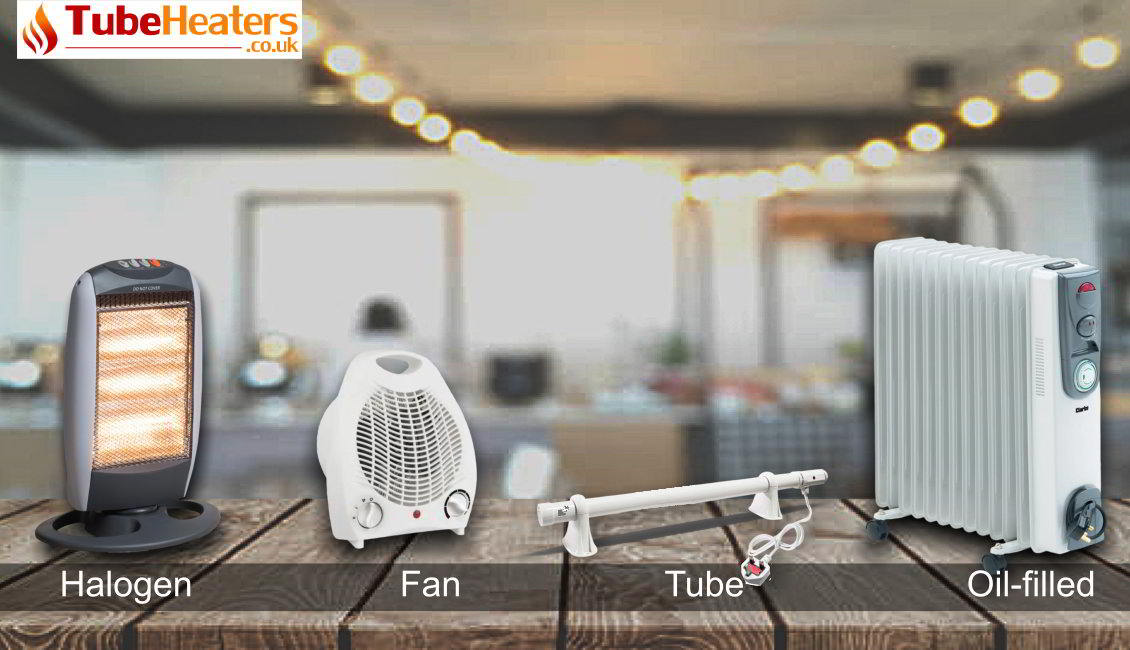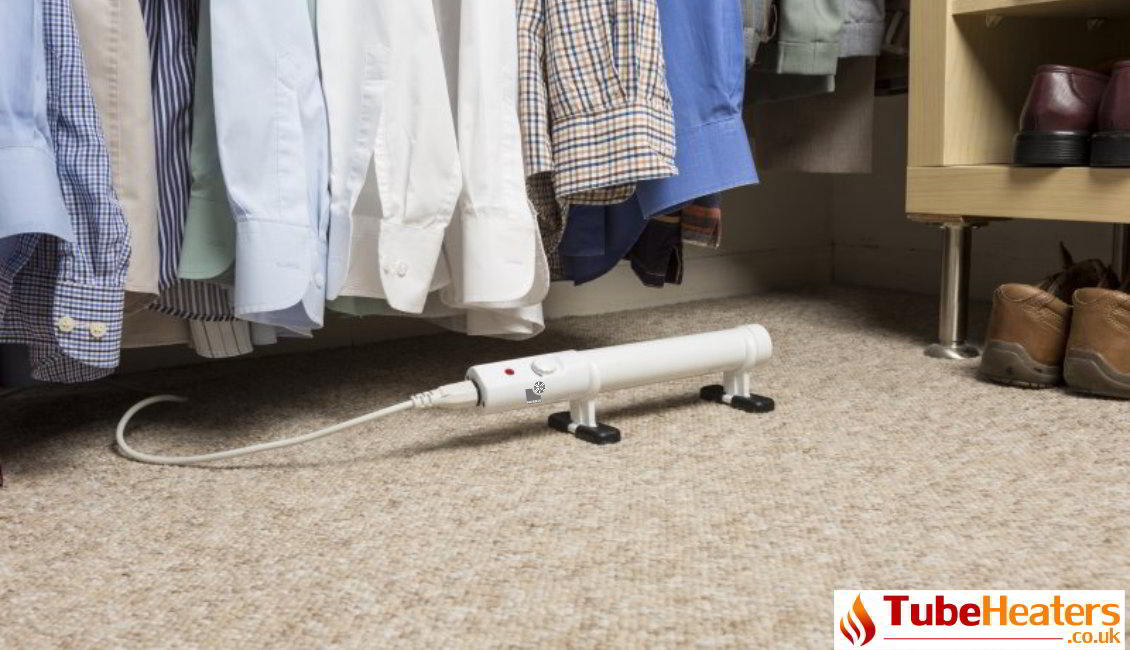
With the UK winter approaching, staying warm without breaking the bank has become a household priority. Yet, finding the cheapest electric heater to run in the UK can be a hassle, especially with the many heating options on the market. Fortunately, it is possible to find a cheap-to-run electric heater that will tick all the boxes—this includes the best heating performance, cost-effectiveness, convenience, and more.
We'll compare some of the cheapest electric heaters to run in your home, comparing how they perform in everyday usage. We will determine how much electricity they need to run, the unique features they have for minimising heat loss, and so on. By the end of this article, you will find the cheapest electric heater to run suited for your greenhouse, garden shed, or patio.
Factors affecting electric heater running costs
To find a cheap to run electric heater, you need to consider the following:
● Wattage: The higher the wattage, the more electricity the heater consumes. Look for heaters with adjustable settings to control energy use.
● Energy efficiency: check efficiency ratings and energy labels. Higher efficiency means more heat output per unit of electricity.
● Thermostat and temperature control: Heaters with thermostats help maintain a consistent temperature, reducing energy waste.
● Room size and insulation: Match heater capacity to room size. Proper insulation helps retain heat, reducing the need for prolonged heating.
● Usage time: The duration and frequency of use directly impact running costs. Short, infrequent use is more economical.
What is the best way to heat a room with electricity?
To know the best option for heating a room, you have to know the various types of space heaters out there. They come in various shapes and use different mechanisms for heating a space. The main ones we will cover here include:
● Halogen heaters
● Oil-filled heaters
● Fan heaters
Halogen heaters
If you are looking for a cheap-to-run electric heater that warms up a room instantly, a halogen heater will do that for you. Halogen heaters are space heaters that use energy-efficient halogen bulbs to heat a room through radiation. The bulbs heat up quickly, providing instant directional heat anywhere the heater is placed.
Advantages of Halogen Heaters
● Ideal for small spaces
● Instantly warms you
● Provide focused heating
● Easy to install
● Safe for the environment
● Silent operation
● Lightweight and portable
Disadvantages
● Loses heat instantly when switched off
● Not applicable in large rooms
● Bulk for tight spaces
● High operation cost due to continuous usage
How much does a Halogen heater cost to run an hour?
Let's take the average output power of a halogen heater as 1200 w. The cost of electricity in the UK is 24.50p per kWh.
Find out the cost of running a halogen heater for an hour;
Output power = 1200w/1000=1.2kWh
Cost of electricity = 24.50 p/kWh
Running the heater for an hour = 1.2kWh x 24.50p/kWh x 1 hour = 29.4 p
Oil-filled heaters
Oil-filled heaters or oil radiators are space heaters that use oil to produce heat. Unlike halogen heaters, oil-filled heaters can provide consistent heat for longer. Oil-filled radiators are made of 5 components:
● Metal columns
● Heating element
● Thermostat
● Control panel
● Thermal cutoff switch
The metal columns form the main body of the heater. They contain fins that are filled with heat-conducting oil sealed inside. The heating element comprises an electric plate at the bottom that heats the oil.
The inbuilt thermostat allows you to set the desired temperature of the heater. With the thermostat set, the heater will turn on or off when the desired temperature is reached. The added control panel houses extra power settings, temperature adjustment controls, and sometimes a timer. The thermal cutoff switch prevents the oil-filled heater from overheating.
Advantages of oil-filled heaters
● Excellent heat retention
● Retains heat when turned off, hence energy efficiency.
● Operates silently, hence ideal for quiet environments
● Thermal cutoff prevents overheating
● Low maintenance; sealed oil requires no replacing
Disadvantages of oil-filled heaters
● Slow warm-up time as the unit first heats the oil before radiating warmth.
● More suited for providing background warmth, not for instant heating.
● Heavy and bulky, making it difficult to move them around.
● Retains heat even when switched off, posing a risk if the hot surface is accidentally touched.
How much electricity does an oil heater use per hour?
A typical oil-filled heater uses 1500w of output power on average. To get the cost of running this unit for an hour,
Power rating = 1500/1000 = 1.5kW
Cost of electricity = 24.50 p/kWh
Cost per hour = 1.5kW x 1hour x 24.50p/kWh= 36.75p
Electric fan heaters
Fan heaters are a popular type of electric heater that uses a fan to blow air over a heating element, distributing warm air quickly throughout a room. They comprise a heating element, fan, thermostat, control panel, and additional safety features.
Main components
● Heating element: this is the main element that generates heat. It can be made of metal or ceramic coils
● Fan: an inbuilt motor-driven fan blows air over the heating element, forcing warm air out of the unit into the room.
● Thermostat: this allows you to set and maintain the desired temperature of the fan heater. It will turn the heater on or off to maintain optimal indoor temperature.
● Control panel: controls the fan heater's power settings, temperature adjustment, and fan speed.
When you turn on the fan heater, electricity flows through the heating element, causing the unit to heat up. The fan then blows air over this heated element, which gets warmed up and then expelled into the room, rapidly increasing room temperature.
The thermostat monitors the room temperature and cycles the heating element on and off to maintain the set temperature, ensuring efficient operation. The fan ensures that warm air is evenly distributed throughout the space.
Advantages of electric fan heaters
● Rapidly heats a room by distributing warm air quickly.
● Compact and lightweight, easy to move between rooms.
● Affordable and cheap to run.
● Available in various sizes and styles to blend with any space.
● Additional controls to fine-tune the internal temperature.
Disadvantages of electric fan heaters
● Noisy operation can be disruptive in bedrooms or home offices.
● Concentrates heat around the heater, leaving other areas feeling colder.
● Tends to dry out the air, potentially causing discomfort to the skin, throat, or eyes.
How much does it cost to run a fan heater per hour?
Fan heaters usually have a power output of between 750w and 1500w. That's an average of 1125W.
To calculate the cost per hour,
Power rating = 1125/1000 = 1.13 kW
Cost of electricity = 24.50 p/kWh
Cost per hour = 1.13kW x 1hour x 24.50p/kWh= 27.56p
Tube heaters
Tube heaters have grown increasingly popular in UK households. These cheap-to-run electric heaters are commonly used for frost protection and to provide low-level background heat in spaces such as greenhouses, garages, and sheds.
The main components in a tube heater include:
● Heating element: It comprises an electric-resistant wire that generates heat when electric currents pass through it.
● Protective tube: this is the metallic or ceramic encasing that houses the heating element.
● Programmable thermostat: modern tube heaters now include a thermostat to set and maintain accurate temperatures
● Mounting brackets: to anchor the heater to walls or surfaces, ensuring the heater is positioned correctly for efficient performance.
● Power cord: for supplying electricity to the heater
● Heat guard: an added layer of protection against accidental damage or contact.
When the tube heater is turned on, electricity flows through the heating element, heating it. The generated heat is then conducted through the protective tube, which radiates the heat into the surrounding space. If the heater has a thermostat, it will monitor the temperature and cycle the heating element on and off to maintain the desired temperature. The even heat distribution from the tube ensures a consistent and gentle warming effect.
Advantages of tube heaters
● Efficient and cost-effective heating solution.
● Provides gentle, even heat distribution.
● Can be mounted on walls or ceilings, saving floor space.
● Ideal for spot heating in specific areas.
Disadvantages of tube heaters
● Not suitable for rapidly heating large spaces.
● Limited in their ability to heat large rooms evenly.
● Some models can be bulky and may not fit well in all environments.
How much does it cost to run an electric heater for 1 hour?
Let's pick a 4-foot thermostatic tube heater that has an output rating of 190 w.
Power rating = 190/1000 = 0.19 kWh
Cost of electricity = 24.50 p/kWh
Cost per hour = 0.19 kWh x 1-hour x 24.50p/kWh = 4.66 p
What type of electric heater is the cheapest to run?
When choosing the cheapest electric heater to run in the UK, it's essential to consider the cost of running the appliance for a day and how much that translates to your monthly electricity bills and the environment in which the heater will be used. So far, thermostatic tube heaters are by far the cheapest electric heaters to run compared to other space heaters.
Here is an overview of the cost of running these four heaters:
Heater Cost per Hour Cost for 24 hours Cost per month
|
Heater |
Cost per Hour |
Cost in 24 hours |
Cost per month |
|
Tube Heater |
4.7p |
£1 |
£30 |
|
Halogen heater |
29.4 p |
£7.1 |
£213 |
|
Fan heater |
27.56p |
£6.6 |
£198 |
|
Oil-filled heater |
36.75p |
£8.8 |
£264 |
A tube heater is the cheapest electric heater to run in winter because of its low operation cost.

About the Author: Noah Williams
Noah Williams is TubeHeaters.co.uk’s dedicated heating specialist, with 10+ years of experience designing energy-efficient heating solutions for homes and businesses. His in-depth knowledge of low-wattage systems—from frost prevention to space optimisation—delivers practical, cost-saving advice you can trust. Noah’s expert guidance ensures you get the right tube heater to stay warm, save energy, and protect your property—exactly as our mission promises.
Is an electric heater cheaper than central heating?
Central heating can be cheaper or more expensive to run depending on the type of central heating system in question. In most UK homes, the common types of central heating include:
● Gas Central Heating: Efficient and cost-effective due to lower gas prices compared to electricity. It uses gas-fired boilers to distribute heat through radiators or underfloor systems.
● LPG Central Heating: Similar to gas central heating but uses liquefied petroleum gas. Suitable where natural gas isn't available but can be more expensive.
● Electric Central Heating: Includes various systems like electric boilers and heat pumps. Generally, they are easier to install but can be more costly to run, especially with high electricity rates.
● Oil Central Heating: Uses oil-fired boilers to heat radiators or underfloor systems. It requires an oil storage tank and regular refilling.
● Renewable Heating: Includes options like heat pumps and solar thermal systems, offering high efficiency and lower carbon emissions but may have higher initial costs.
Tube heaters offer several advantages over central heating systems:
● Operation: tube heaters provide efficient spot heating, ideal for heating specific areas quickly without the need for extensive duct work.
● Efficiency: While central systems may have higher overall efficiency ratings, tube heaters are highly efficient in their focused application, converting electricity directly into heat.
● Cost-effectiveness: They are generally more affordable to install and maintain, requiring less infrastructure and allowing for independent heating of individual rooms or zones.
● Flexibility: Tube heaters offer flexibility in heating control, allowing for customised comfort levels without heating the entire building.
● Ease of installation: They are easy to install and can be mounted on walls or ceilings, making them suitable for retrofitting or smaller spaces where centralised systems may not be practical.
Conclusion
A thermostatic tube heater is the cheapest electric heater to run in the UK in various settings, including greenhouses, cupboards, wardrobes, caravans, bathrooms, sheds, frost protection and grow tents. They offer consistent, gentle heat with low power consumption (the 55W model has a 1p per hour running cost), making them economical and efficient.
Unlike halogen heaters, which can be too intense, or fan heaters, which consume more power, tube heaters provide balanced and energy-efficient heating. Oil-filled heaters, while reliable, are often too bulky and costly for many applications.
If you are looking to reduce energy bills while maintaining a stable and comfortable environment, tube heaters are the best choice. They offer a smart investment with both economic and practical benefits, ensuring effective and affordable heating for various needs.






Leave a Comment